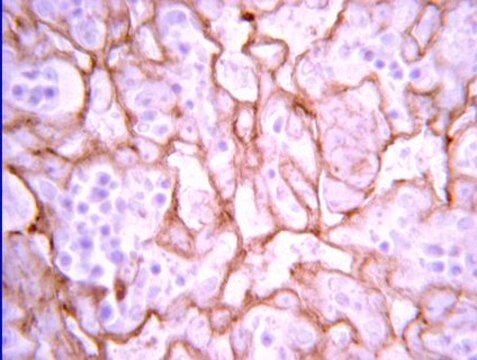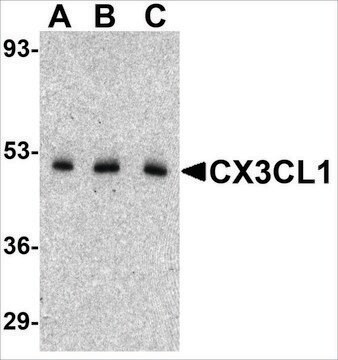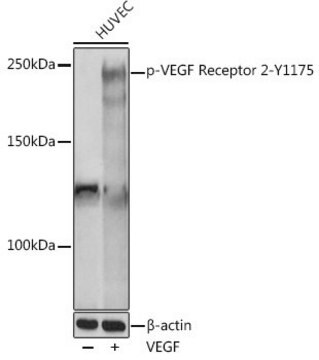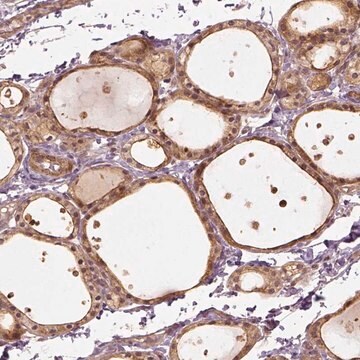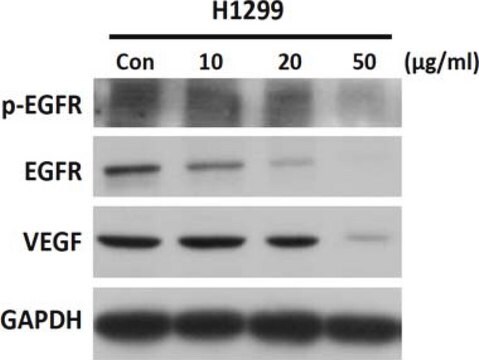Wichtige Dokumente
V1014
Anti-Vascular Endothelial Growth Factor Receptor 2 antibody produced in goat
affinity isolated antibody, lyophilized powder
Synonym(e):
Anti-Flk-1, Anti-VEGF R2
About This Item
Empfohlene Produkte
Biologische Quelle
goat
Qualitätsniveau
Konjugat
unconjugated
Antikörperform
affinity isolated antibody
Antikörper-Produkttyp
primary antibodies
Klon
polyclonal
Form
lyophilized powder
Speziesreaktivität
mouse
Methode(n)
flow cytometry: 3-10 μg/mL (106 cells)
immunohistochemistry: 5-15 μg/mL using cells and tissues
neutralization: suitable
western blot: 0.1-0.2 μg/mL
UniProt-Hinterlegungsnummer
Lagertemp.
−20°C
Posttranslationale Modifikation Target
unmodified
Angaben zum Gen
mouse ... Kdr(16542)
Verwandte Kategorien
Allgemeine Beschreibung
Anti-Vascular Endothelial Growth Factor Receptor-2 recognizes mouse VEGF R2.
Spezifität
Immunogen
Anwendung
Physikalische Form
Haftungsausschluss
Sie haben nicht das passende Produkt gefunden?
Probieren Sie unser Produkt-Auswahlhilfe. aus.
Lagerklassenschlüssel
11 - Combustible Solids
WGK
WGK 1
Flammpunkt (°F)
Not applicable
Flammpunkt (°C)
Not applicable
Persönliche Schutzausrüstung
Eyeshields, Gloves, type N95 (US)
Hier finden Sie alle aktuellen Versionen:
Besitzen Sie dieses Produkt bereits?
In der Dokumentenbibliothek finden Sie die Dokumentation zu den Produkten, die Sie kürzlich erworben haben.
Artikel
Cancer stem cell media, spheroid plates and cancer stem cell markers to culture and characterize CSC populations.
Unser Team von Wissenschaftlern verfügt über Erfahrung in allen Forschungsbereichen einschließlich Life Science, Materialwissenschaften, chemischer Synthese, Chromatographie, Analytik und vielen mehr..
Setzen Sie sich mit dem technischen Dienst in Verbindung.
